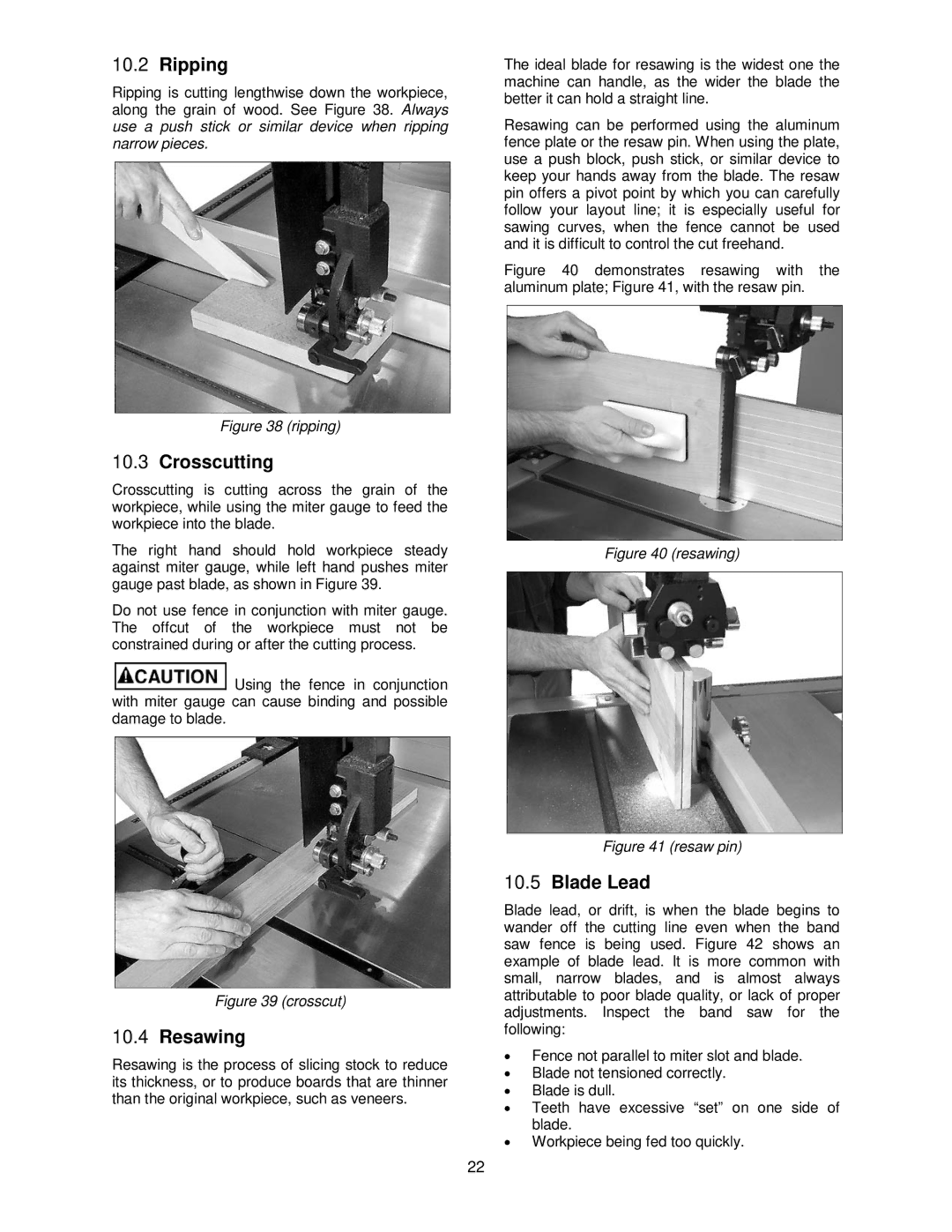
10.2Ripping
Ripping is cutting lengthwise down the workpiece, along the grain of wood. See Figure 38. Always use a push stick or similar device when ripping narrow pieces.
Figure 38 (ripping)
10.3Crosscutting
Crosscutting is cutting across the grain of the workpiece, while using the miter gauge to feed the workpiece into the blade.
The right hand should hold workpiece steady against miter gauge, while left hand pushes miter gauge past blade, as shown in Figure 39.
Do not use fence in conjunction with miter gauge. The offcut of the workpiece must not be constrained during or after the cutting process.
![]() Using the fence in conjunction with miter gauge can cause binding and possible damage to blade.
Using the fence in conjunction with miter gauge can cause binding and possible damage to blade.
The ideal blade for resawing is the widest one the machine can handle, as the wider the blade the better it can hold a straight line.
Resawing can be performed using the aluminum fence plate or the resaw pin. When using the plate, use a push block, push stick, or similar device to keep your hands away from the blade. The resaw pin offers a pivot point by which you can carefully follow your layout line; it is especially useful for sawing curves, when the fence cannot be used and it is difficult to control the cut freehand.
Figure 40 demonstrates resawing with the aluminum plate; Figure 41, with the resaw pin.
Figure 40 (resawing)
Figure 39 (crosscut)
10.4Resawing
Resawing is the process of slicing stock to reduce its thickness, or to produce boards that are thinner than the original workpiece, such as veneers.
Figure 41 (resaw pin)
10.5Blade Lead
Blade lead, or drift, is when the blade begins to wander off the cutting line even when the band saw fence is being used. Figure 42 shows an example of blade lead. It is more common with small, narrow blades, and is almost always attributable to poor blade quality, or lack of proper adjustments. Inspect the band saw for the following:
•Fence not parallel to miter slot and blade.
•Blade not tensioned correctly.
•Blade is dull.
•Teeth have excessive “set” on one side of blade.
•Workpiece being fed too quickly.
22
